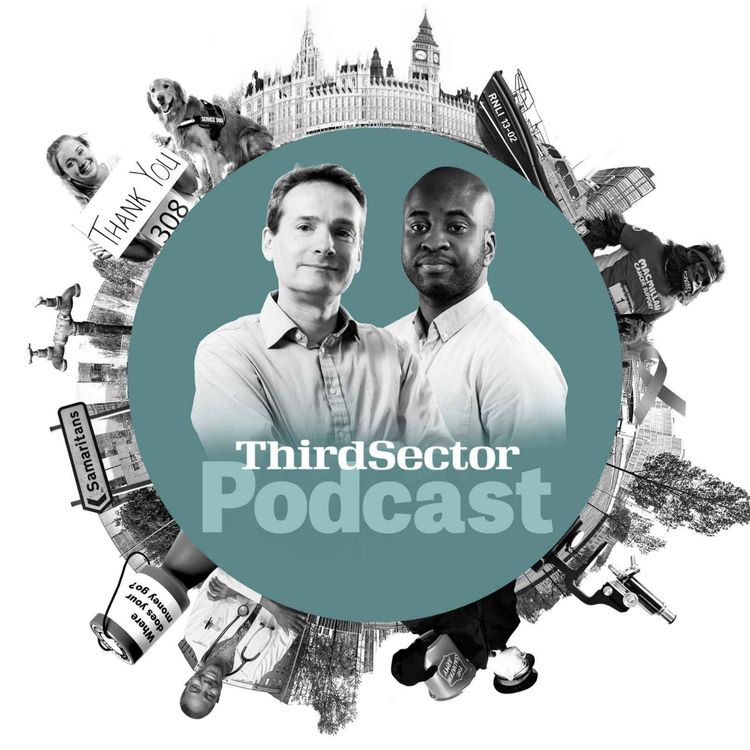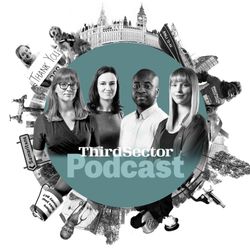Share

Third Sector
How being more controversial has paid off for the Alzheimer’s Society
Andy Ricketts and Dami Adewale are joined by Kate Lee, chief executive of the Alzheimer’s Society.
Kate provides insight into the brand work recently undertaken by the charity, with a focus on raising awareness of dementia as well as the charity’s own profile.
She explains how taking a more controversial approach to public messaging, including the charity’s recent ‘Long Goodbye’ advertising campaign, has brought attention to the organisation and coincided with increased donations.
She also talks about the charity’s new strategy, its DEI work and the implications of her personal connection to dementia.
Do you have stories of people whose lives have been transformed for the better thanks to your charity? If so, we’d like to hear them! All it takes is a short voice message to be featured on this podcast. Email lucinda.rouse@haymarket.com for further information.
Tell us what you think of the Third Sector Podcast! Please take five minutes to let us know how we can bring you the most relevant, useful content. To fill in the survey, click here.
More episodes
View all episodes

How did the sector fare in 2025?
31:13|Lucinda Rouse is joined by Emily Burt, Emily Harle and Andy Ricketts to dissect the leading stories from the voluntary sector in 2025.Lucinda delivers a speedy round-up of the year’s charity news before the four discuss their selected top stories. These include the launch of the Civil Society Covenant and leadership and governance challenges at Oxfam GB and World Vision UK.They share their nominations for the year’s strangest stories, from sabotaged locks at a Cheshire museum to the children’s charity whose future was threatened after it bought land that was open to shooting parties.The team reflects on some recurring trends over the course of the year, from the unwelcome waves of redundancies and charity closures to the effects of rising far-right activism on the sector.Tell us what you think of the Third Sector Podcast! Please take five minutes to let us know how we can bring you the most relevant, useful content. To fill in the survey, click here.
Under the bonnet of the People’s Postcode Lottery
33:32|Lucinda Rouse and Andy Ricketts are joined by Clara Govier, managing director of the People’s Postcode Lottery.Clara outlines the process for disbursing funds to charities and explains what the People’s Postcode Lottery looks for in prospective charity partners. She gives her thoughts on how funders could work together more effectively and puts forward the case for lifting the sales cap on charity lotteries.Tell us what you think of the Third Sector Podcast! Please take five minutes to let us know how we can bring you the most relevant, useful content. To fill in the survey, click here.
A stocktake on charity leadership concerns
30:37|Lucinda Rouse and Dami Adewale are joined by Jane Ide, chief executive of the charity leaders body Acevo, to reflect on some of the issues facing sector leaders.Jane provides an update on work relating to the Civil Society Covenant, which was published in July, saying more momentum is expected from the government in the first quarter of 2026.She warns that charity leaders should be lowering their expected time in post due to unsustainable pressures. And she observes that polarisation within organisations needs to be considered as much as the work being done externally to convene and strengthen civil society. Tell us what you think of the Third Sector Podcast! Please take five minutes to let us know how we can bring you the most relevant, useful content. To fill in the survey, click here.
What is the ‘impact economy’? And refugee charities in far-right headwinds
33:21|Lucinda Rouse, Emily Harle and Emily Burt reflect on two significant sector issues from the past month.Emily Harle shares findings from a recent roundtable meeting of leaders from refugee and migration charities, whose staff have experienced a surge in targeted hostility in recent months.And after the government launched its new Office for the Impact Economy, Lucinda asks what the phrase actually means and the part the voluntary sector will play in it. Tell us what you think of the Third Sector Podcast! Please take five minutes to let us know how we can bring you the most relevant, useful content. To fill in the survey, click here.
How a national charity is fostering hyperlocal connections
33:17|Lucinda Rouse and Emily Burt are joined by Vic Harper, chief executive of the food redistribution charity The Bread and Butter Thing.Vic describes how the charity has taken a holistic approach to the way it supports communities by working alongside other charities and local authorities at its food distribution hubs. She outlines the process of identifying suitable community partners and explains why a one-size-fits-all approach to communication with such a diverse assortment of stakeholders will never work.Tell us what you think of the Third Sector Podcast! Please take five minutes to let us know how we can bring you the most relevant, useful content. To fill in the survey, click here.
How to engage with partners in effective lobbying
25:48|Lucinda Rouse and Emily Harle are joined by Leicia Feare, associate director of communications and campaigns at the youth empowerment charity Mission 44.Leicia talks about the charity’s first campaign, Nothing Happens in Isolation, which aims to promote inclusion in schools. She describes how Mission 44 convened partners to formulate a list of recommendations that the charity’s founder, the motor racing driver Sir Lewis Hamilton, presented to the Prime Minister.She outlines the measures taken by the charity to incorporate the views and priorities of young people who have experienced exclusion from school and explains how it has avoided tokenism in the process.She reflects on the value of having a popular figurehead at the top of the organisation while acknowledging the difficulty of developing a stand-alone profile for Mission 44 when media interest is invariably focused on its central personality.Tell us what you think of the Third Sector Podcast! Please take five minutes to let us know how we can bring you the most relevant, useful content. To fill in the survey, click here.Subscribe to the Third Sector Podcast on Apple Podcasts or on Spotify.
Getting project endings right
32:42|Lucinda Rouse and Andy Ricketts are joined by Ruth Hollis, chief executive of the Olympic legacy charity Spirit of 2012.Ruth reflects on the responsibility of being a funder approaching close-out as Spirit of 2012 prepares to wind up in early 2026.She acknowledges the difficulties for charities seeking to ensure the sustainability of their programmes in the absence of long-term funding and suggests ways in which grantmakers can work together to reduce the occurrence of funding cliff-edges.She stresses the importance of built-in time for reflection during the course of a programme and explains how Spirit of 2012 is taking a different approach to its final report.Tell us what you think of the Third Sector Podcast! Please take five minutes to let us know how we can bring you the most relevant, useful content. To fill in the survey, click here.
A new Charity Commission chair
10:53|Lucinda Rouse and Andy Ricketts share their thoughts on the announcement this week that Dame Julia Unwin has been named the preferred candidate to be the new chair of the Charity Commission.Andy explains the role of the chair, suggests how Unwin might be different to her predecessors and provides a summary of reactions from sector leaders to the prospect of her appointment.An excellent choice’ – sector leaders react to Charity Commission chair announcement.Tell us what you think of the Third Sector Podcast! Please take five minutes to let us know how we can bring you the most relevant, useful content. To fill in the survey, click here.
The editorial team talks change at the RNLI, volunteering trends and Manchester Pride’s liquidation
33:48|Lucinda Rouse, Emily Harle, Emily Burt and Dami Adewale reflect on some of the top sector stories from the past month.Emily Burt gives her thoughts on the state of the sector in 2025 following her recent return from maternity leave.Lucinda shares snippets from an interview with Peter Sparkes, chief executive of the Royal National Lifeboat Institution, in which they discuss a new five-year plan that aims to improve engagement with the charity’s fundraising and volunteering communities.Dami explores conflicting narratives on the health of volunteering more broadly and the key motivators for people signing up to volunteer roles.And Emily Harle reflects on what the recent closure of Manchester Pride says about how charities communicate financial difficulty.Listen back to Janet Thorne on the Third Sector Podcast: Cultivating a more flexible volunteering offer.Tell us what you think of the Third Sector Podcast! Please take five minutes to let us know how we can bring you the most relevant, useful content. To fill in the survey, click here.